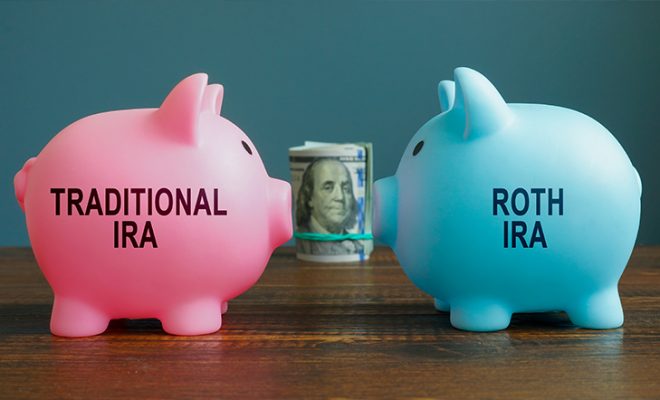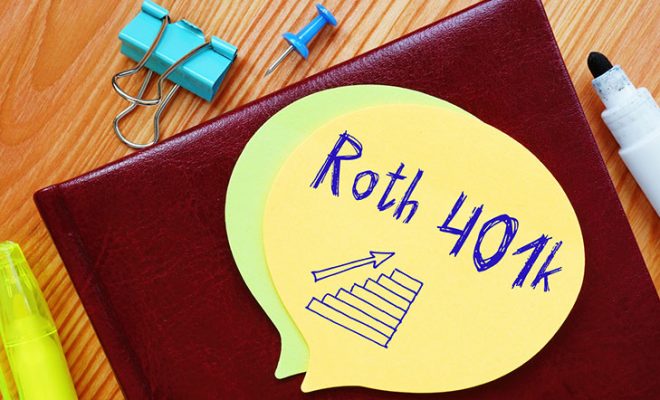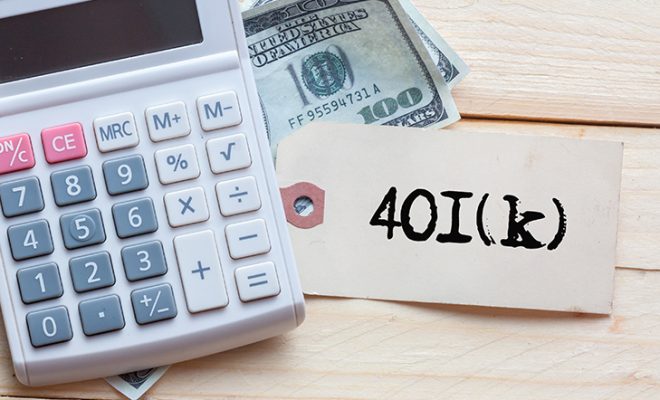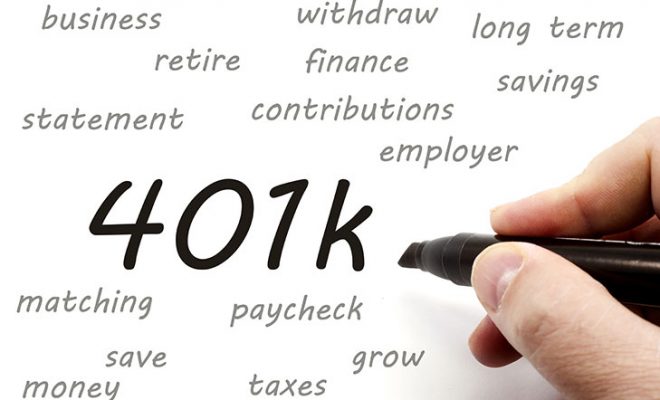Why You Should Use a 401k During Your Peak Earning Years

Retirement planning can involve a number of things, right from investing in stocks, bonds, and mutual funds to certificates of deposits, money market accounts, real estate, etc. It also requires a host of strategies like tax saving approaches, tracking expenses, finding other sources of income apart from your primary job, creating passive income, having an emergency fund, and more. All of these things can take time. Above all, they require experience and making the right moves at the right time.
While retirement planning is generally recommended from the beginning of your career, your peak earning years can contribute the most to your retirement fund. The higher you earn, the more you can save for the future without disrupting your present needs and wants. However, a lot of people tend to get swayed by their high incomes. Having a superfluous flow of money can create a false illusion of abundance and push you off the track of retirement planning. Social pressures also increase when you move up the ladder. This is why it is important to channel your income towards the right uses. Increasing your investment budget, repaying your debts, limiting further debt, etc., can be some things to focus on. Retirement accounts like the 401k may also require a unique perspective in your peak years for it to benefit you in your golden years of retirement. To learn why you should use a 401k during your peak earning years and how it can help you save for retirement, consult with a professional financial advisor who can guide you on the same.
Find out more about the tax-deferred 401k account and how you can use it to your advantage during your peak earning years.
What is a 401k retirement account?
A 401k retirement account is a tax-advantaged account that you can use to save for your retirement. 401ks are offered by the employer to the company’s employees. This is a part of the employee’s paycheck, and the contributions are made directly from the employee’s salary. Most private companies offer a 401k. However, there is no compulsion for the same. A company may choose to offer a 401k or not. Having said that, a majority of companies provide a 401k as it helps them retain employees for a long time and creates job satisfaction for them. Public sector employees have a similar account, the 403(b) retirement account.
The 401k account has fixed contribution limits according to which you can contribute money every year. These are decided by the Internal Revenue Services (IRS) and posted on their website for each year. You can contribute up to these limits from your paycheck. Additionally, the employer may choose to match your contribution or not contribute at all, depending on their preferences.
For 2022, the 401k contribution limits are as follows:
- If you are under the age of 50, you can contribute up to a maximum of $20,500.
- If you are aged 50 years or older, you can make an additional catch-up contribution of $6,500 and make a total contribution up to a maximum of $20,500 + $6,500 = $27,000.
- The maximum joint contribution by both the employer and employee under the age of 50 is $61,000.
- The maximum joint contribution by both the employer and employee aged 50 years or older is $67,500.
There are two types of 401k accounts:
1. Traditional 401k account:
If you select this, you can contribute pre-tax dollars and not pay tax on your contributions. However, your withdrawals are taxed in retirement. A traditional 401k helps you lower your tax in the present by shifting your tax liability to the future in retirement.
2. Roth 401k account:
If you select this, you can contribute after-tax dollars. So, your contributions are taxed in the present. But you do not pay any tax in the future when you withdraw your money in retirement.
A traditional 401k account has mandatory Required Minimum Distributions (RMDs). There are no RMDs for a Roth 401k. This means the Roth version is exempt from RMDs.
How can a 401k help in your peak earning years?
As stated above, your peak earning years are some of the most precious years of your life. These are the years when you may be the most settled in your career. Apart from the monetary growth, factors like professional progression, learning, and experience can all contribute to your future financial security and well-being.
Discussed below are some of the ways a 401k can help you in your peak years.
1. Roth vs pre-tax deferral – consider converting to a Roth 401:
One of the things that you can consider during these years is a Roth conversion. A Roth 401k can help you make the most of your chief earning years in several ways. The income tax rates at present, however high they may seem right now, are likely to rise more in the future. Roth 401ks are not taxed in retirement if you withdraw them after five years of holding the account and after the age of 59.5. Hence, by shifting to a Roth 401k, you can lower your tax liability in the future. There has been speculation for a few years that the government may increase the tax rate. The income tax slabs will probably be the highest for the high-income holders than other categories. A significant reason for this is the rising national debt. In addition to this, depleting Social Security reserves and the demand for free healthcare and education, subsidized college education, getting rid of student debt, and more may present a situation soon enough where income tax brackets are increased to support the economy and these reformed policies. When this happens, the high-income groups will be the most impacted. If you are at the peak of your career, you can shift to a Roth 401k and subsequently pay the tax on your conversion and future contributions now. This way, when you withdraw your money in retirement, you will not be left with any more tax to pay and can enjoy a comfortable retirement. Moreover, if you are doing well in your career right now, chances are that you will be in a bigger income group later in life. As a result, you would also be in a high tax bracket. So, getting rid of the taxes now can be prudent.
A Roth 401k is also a great option since you may not be able to use a Roth IRA because of Modified Adjusted Gross Income (MAGI) restrictions. In 2022, if you are filing taxes as a single individual, your Modified Adjusted Gross Income (MAGI) must be less than $144,000 for the tax year. If you are married and filing jointly, your MAGI must be less than $208,000 for the tax year. If you are not meeting these income limits, the only way to access a Roth account can be through a 401k.
2. Maximize your contributions to get a high employer match:
At the peak of your career, you are likely to be doing well and earning the highest in your life so far. This can be a phase where you may be the most settled in your life and would most likely be an asset to your company. This situation works in your favor in two ways. Firstly, since you are doing well and earning enough money, you would be able to maximize your 401k contributions, which will help you amass a sizable corpus for your future needs. It would be relatively easy to meet the maximum contributions on a high salary. In addition to this, if your employer decides to match your contribution, you would be able to save up to double every year. Typically, employers can choose to match the contribution or contribute a part of it from their end. The company has the discretion to decide how it wishes to act. However, even if they match half your contribution, you can still get a pretty good deal. The total annual contribution for the employer and employee match is capped at $61,000 if you are under 50 and $67,500 if you are aged 50 or older. This can be a great figure to aim for every year. In most cases, if you are an asset to the company and doing well in your field, the employer may be willing to contribute the total amount to retain you.
3. Get protection from creditors to protect your money:
Creditors can access some of your money, including investments and savings, if you land in financial issues. Therefore, it is important to park your money in places that creditors cannot claim. One option is to put your money in a 401k. A tax-deferred 401k account is protected under the Employee Retirement Income Security Act (ERISA), which is safe from creditors. In addition to this, ERISA accounts like the 401k are also protected from bankruptcy under the Bankruptcy Abuse Prevention and Consumer Protection Act (BAPCPA). That said, a 401k is not protected by the federal government and the IRS can still seize your 401(k) account to collect unpaid tax. Even then, a 401k offers a protective shield to your money. Although it is advised to avoid any kind of financial trouble, if you do find yourself facing financial issues, a 401k can offer your money better security.
4. Make up for lost time:
If you are new to retirement planning or have started planning for your golden years later in life, you may want to use your peak years to bridge the gap of the lost time. A lot of people do not start saving in a 401k or any other retirement vehicle, for that matter, in their 20s and 30s. However, starting early has many benefits. It gives your money a longer investment term to compound, it lets you save more even if you start small, and above all, it offers you a great start in life. If you were late to retirement planning, you could use your peak years to save more aggressively and cover up the shortcoming in your savings. This can be done by maximizing your contributions, selecting high-risk and return investment options in your 401k like stocks, mutual funds, exchange-traded funds, target date funds, guaranteed investment contracts (GICs), etc., hiring a financial advisor to get help with managing your 401k, and following other similar strategies. Apart from the risk appetite, a financial advisor can also help select appropriate investment options on the basis of costs involved like expense ratios and processing fees, past performance, potential returns in the future, Net Asset Values (NAVs), and other similar things.
Other tips that can help you at the peak of your career:
1. Pay off all your debt:
Before you focus on your 401k, make sure that you clear any pending debt that you may have. High-interest debt, credit card dues, etc., can impact your credit score and come in the way of your financial growth. If you are earning well, you can prioritize paying all your debt as soon as you can and then save for your future needs.
2. Curb your expenses:
The more you earn, the more you tend to spend. Try to control the urge to increase your expenses in tandem with your earnings. This is a normal reaction for most people. However, if you are able to keep your expenditures the same as before, even as your salary increases, you can use the excess income towards savings and investments.
To conclude
Roth and traditional IRAs, 401k plans and other tax-deferred saving plans will always hold an important place in an average individual’s investment portfolio. A 401k, in particular, has been one of the first accounts that most people start with, as it is usually a part of their first paycheck. However, using it efficiently is a must. Even though you should ideally be saving in it all your life, saving more aggressively during the years you earn the most can offer you endless benefits and better financial security for life.
You can use the tips given above or contact a financial advisor to get a better idea of how to make the most of your workplace 401k retirement account. Use the free advisor match service to connect with 1-3 financial advisors based on your financial requirements. All you need to do is answer a few simple questions about yourself and the match tool will find advisors that match your financial needs.
For further information on creating a suitable retirement plan for your unique financial requirements, visit Dash Investments or email me directly at dash@dashinvestments.com.
About Dash Investments
Dash Investments is privately owned by Jonathan Dash and is an independent investment advisory firm, managing private client accounts for individuals and families across America. As a Registered Investment Advisor (RIA) firm with the SEC, they are fiduciaries who put clients’ interests ahead of everything else.
Dash Investments offers a full range of investment advisory and financial services, which are tailored to each client’s unique needs providing institutional-caliber money management services that are based upon a solid, proven research approach. Additionally, each client receives comprehensive financial planning to ensure they are moving toward their financial goals.
CEO & Chief Investment Officer Jonathan Dash has been covered in major business publications such as Barron’s, The Wall Street Journal, and The New York Times as a leader in the investment industry with a track record of creating value for his firm’s clients.










